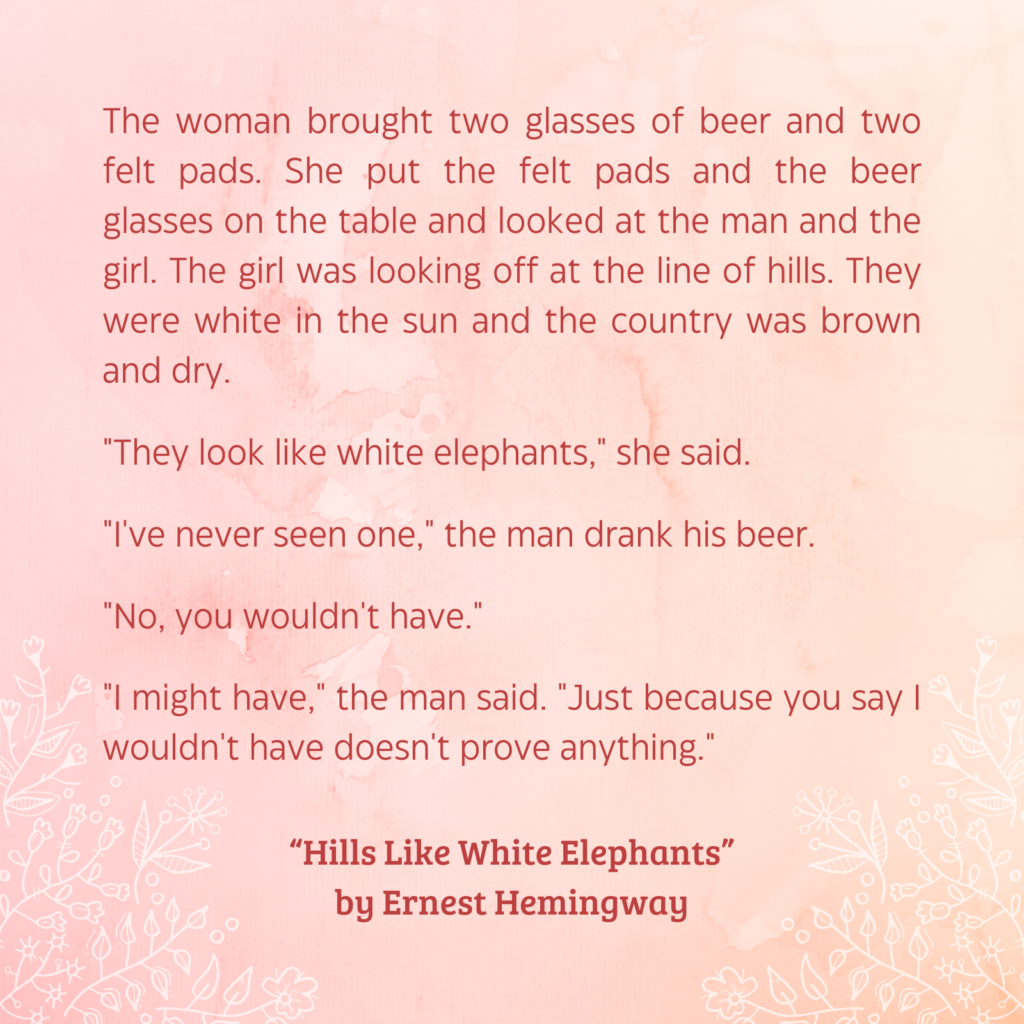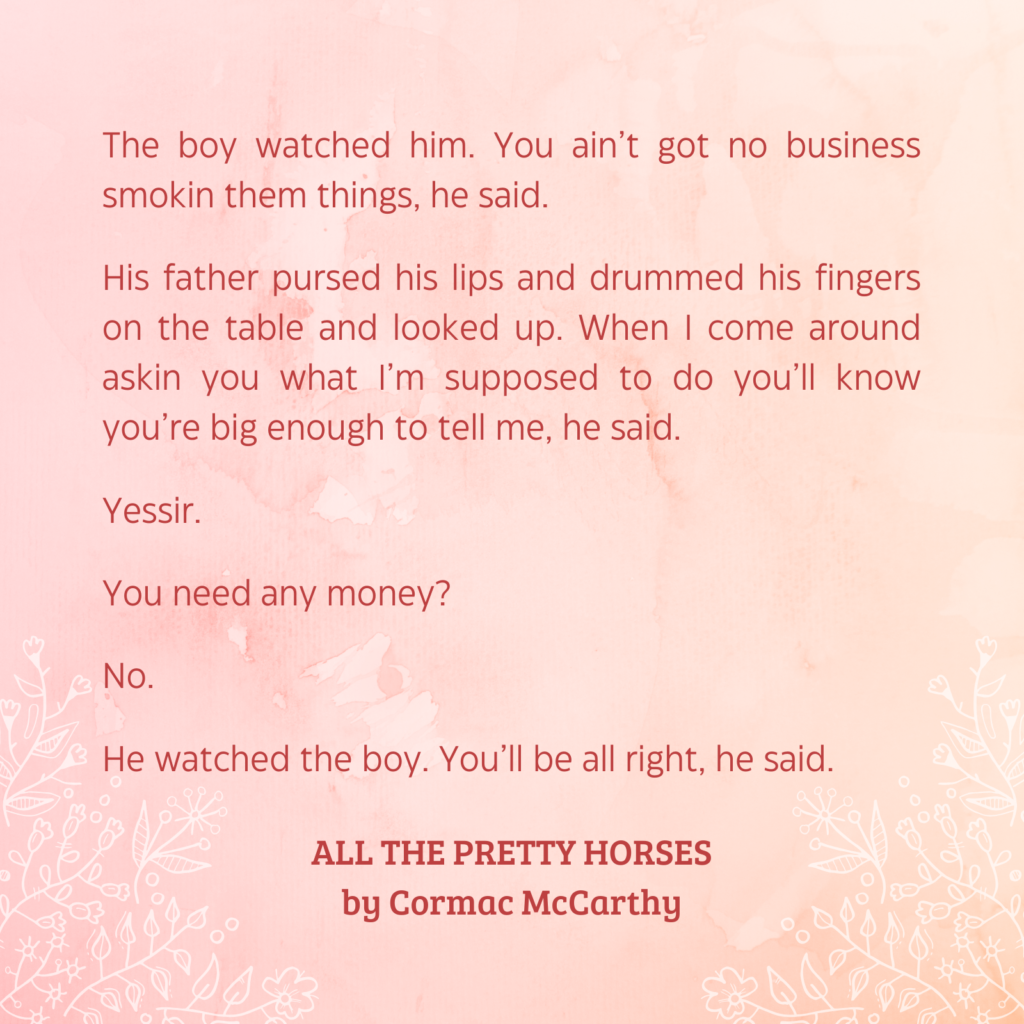Welcome to the stark, sere landscape that is Objective Narration. The barren tundra of the Republic of Letters. The dispassionate play-by-play that leaves you to process your emotions alone.
This is “fly on the wall” reporting, where the Narrator offers only what they can see and hear. No inner monologues, no feelings, no interpretive commentary.

Ernest Hemingway championed Objectivity through his Iceberg Theory, and it became a gold standard of 20th century literature. Hemingway maintained that only the surface elements of a story should make it onto the page, while character thoughts and motivations remain undisclosed. Through this authorial restraint, greater themes and meanings can emerge.
And perhaps the height of this Narrative type comes from Cormac McCarthy, who strips his prose so bare that it even lacks quotation marks:

Although at first glance this style appears unlettered, McCarthy is consistent and intentional. In the above quote, you can feel the father-son relationship despite the bareness of the words themselves. And that bareness matches his broader themes within the book. Thus, it’s readily evident that a master wordsmith wrote this exchange.
Less Is More
The strength of Objective Narration lies in its minimalism. It allows individual Readers to interpret a text according to their understanding. I.e., by recounting only objective truth, it creates opportunities for subjective interpretation.
However, because it is so stripped down, it creates a labor-intensive process, often requiring several drafts to determine which details are essential to the story as a whole.
Its minimalist style also forces the Reader to do all the emotional labor themselves, which can be off-putting to those who read for leisure or escapism—particularly if the story’s characters are awful people. (See also: why I don’t enjoy reading Hemingway. Sorry, not sorry.)
For Readers who want to skip overt emotions, though, this type of narration sings.
Objective Narration across POVs
While its spare form seems to tie it to Third Person Point of View, Objectivity could appear in First or Second POVs as well. For example, a neurodivergent First Person Narrator might report only truth and leave the Reader to read between the lines for emotions and motivations. Second Person has ready objectivity in its non-fiction branch—instruction manuals are inherently Objective, after all—but additional applications in the fiction branch could be fun.
If you launch into this style, beware your prose becoming too dry. The straightforward, no-nonsense, frill-free narrator provides facts without feelings, which can all too easily become a story with no soul.
By its nature, Objective Narration holds the characters and plot at a distance, making it the least immersive of the various narration types. So even though, craft-wise, it is exquisite, in worst case execution, the book is ultimately put-down-able.
- What are your favorite examples of Objective Narration?
- Do you enjoy reading this type of narration? Why or why not?
Up next: Observational Narration
Previous: Present Tense Narration
Index Page: Point of View